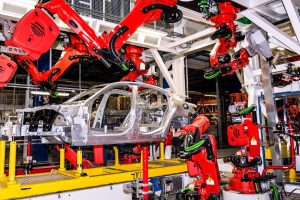- 🚗 Tesla plans to produce more affordable models starting in the first half of 2025.
- 💡 New vehicles will incorporate both current and next-generation platform elements.
- 🔄 These vehicles will be manufactured on the existing production lines.
- 📉 Cost reductions might be less than expected, focusing on capex-efficient growth.
- 📈 Tesla aims for over 50% growth in vehicle production over 2023 before new investments.
Tesla, a trailblazer in the electric vehicle industry, has announced exciting plans to roll out more affordable models by the first half of 2025. This strategic move has piqued the interest of consumers and investors alike. What can we expect from Tesla’s upcoming models, and how will they impact the automotive landscape? Let’s dive into Tesla’s ambitious production plans and growth strategy.
The Push for Affordability
In recent years, Tesla has established itself as a leader in the electric vehicle market, with its high-end models like the Model S and Model X capturing global attention. However, affordability remains a crucial factor for many potential buyers. Tesla’s plan to introduce less expensive models is a game-changer for those who have long desired to drive a Tesla without the higher price tag.
Key Details:
- Launch Timeline: Production of these affordable models is set to begin in the first half of 2025. This timeline indicates Tesla’s commitment to making electric vehicles accessible to a broader audience.
- Platform Innovation: These new vehicles will integrate elements from both Tesla’s current platforms and their next-generation iterations, ensuring they meet high performance and innovation standards.
Manufacturing Efficiency
A significant aspect of Tesla’s plan is its approach to manufacturing. By leveraging existing production lines, Tesla can avoid the massive capital expenditure typically associated with new factory setups. This capex-efficient growth model allows Tesla to scale up its production without incurring prohibitive costs.
Advantages:
- Shared Production Lines: Using current production infrastructure for new models minimizes the need for additional investments, aligning with Tesla’s cost-effective strategy.
- Volume Growth: Tesla aims to achieve a more than 50% increase in vehicle production over its 2023 numbers before committing to new production lines. This ambitious target highlights Tesla’s confidence in its existing capabilities and future market demand.
The Road Ahead
Tesla’s efforts to develop and produce affordable electric vehicles could significantly alter the dynamics of the automotive industry. By expanding its product lineup to include more budget-friendly options, Tesla is poised to capture a more extensive customer base and further promote the adoption of sustainable transport.
Potential Impact:
- Consumer Reach: With lower-priced models, Tesla can attract more diverse demographics, enhancing its market share.
- Sustainability Milestone: Offering affordable electric options underscores Tesla’s commitment to reducing carbon emissions and encouraging green technology adoption.
- Economic Growth: This strategy not only supports Tesla’s growth but also contributes to economic development by creating jobs and stimulating innovation in the electric vehicle sector.
Conclusion
Tesla’s 2025 plans mark a pivotal moment in its journey to make electric vehicles mainstream. As the company prepares to introduce more cost-effective models, stakeholders will keenly observe how this initiative reshapes the industry and affects Tesla’s long-term market position. With the potential to revolutionize both consumer accessibility and sustainability, Tesla’s upcoming affordable models are worth watching.





